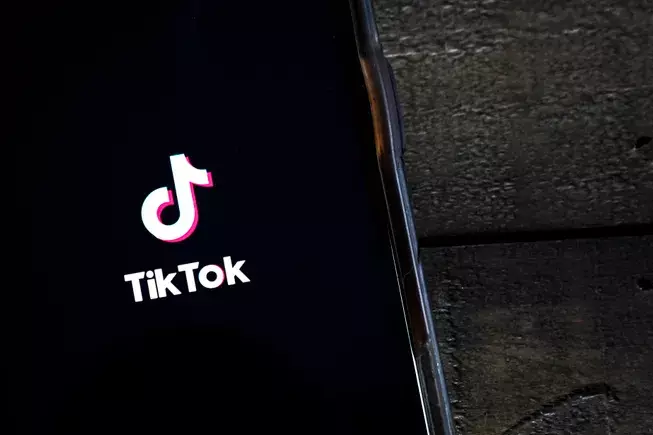In the rapidly evolving landscape of global social media, TikTok’s latest maneuver reveals a bold strategy to secure its foothold in the United States while complying with national security concerns. The development of an exclusive U.S.-only version signals a pivotal shift—one wrought with geopolitical tension, corporate agility, and the quest for user engagement. This move embodies more than just a technical update; it exposes the deeper push-and-pull between economic interests and national sovereignty.
Rather than simply adapting its existing platform, TikTok appears to be innovating a bifurcated approach. The internal codename “M2” represents an effort to craft a tailored experience that satisfies American regulatory mandates—particularly restrictions on foreign influence and control. The move could serve as a blueprint for how global tech giants might navigate sovereignty challenges moving forward. By creating a localized app, TikTok aims to retain its competitive edge, preserving the addictive algorithm that fuels user engagement while appeasing policymakers wary of foreign interference.
Separating Control from Content: A Double-Edged Sword
One of the most contentious aspects of TikTok’s negotiations with U.S. officials is the handling of its proprietary algorithm. Known for its unparalleled ability to captivate users, the algorithm is arguably the backbone of TikTok’s success. Yet, it also embodies the core political sticking point—allowing U.S. authorities to scrutinize or even control what content is promoted, in line with national security concerns.
The proposed U.S.-only version potentially encases the algorithm—either to limit access or to modify its operation—raising questions about whether TikTok can preserve the platform’s compelling nature while satisfying regulatory demands. If the algorithm is partially or fully separated from the main app, TikTok risks diluting its engagement magic, which could backfire by diminishing its appeal. Conversely, if it manages to retain the core engagement engine, this could mark a significant win—a demonstration of how a tech company can retain its essence without compromising national security.
This tension underscores the broader struggle between innovation and regulation. Tech firms want to innovate freely; governments seek to assert oversight. The outcome could redefine the social media landscape—and set a template for future negotiations.
Geopolitical Maneuvering and Corporate Power Plays
The timing of these developments is as telling as the initiatives themselves. The narrative aligns with the political backdrop of President Trump’s push to orchestrate a sale that aligns with U.S. interests. The announced deal with a “group of very wealthy people” hints at a strategic move to privatize TikTok’s U.S. operations—effectively creating a controlled, domestic alternative to its Chinese-owned roots. Such a strategy could serve dual purposes: protecting American data and limiting foreign influence while maintaining the company’s profitability.
Moreover, the state of negotiations reveals how high-stakes corporate diplomacy becomes intertwined with national security. The administration’s delayed actions—three postponements of the forced sale—demonstrate the complexity of balancing diplomatic relations, economic interests, and user retention. The impending expiration of executive orders places pressure on all parties to reach a tangible compromise, one that could set a precedent for how other foreign technology firms operate within U.S. borders.
While some critics might see this as a capitulation, it’s also an innovative form of pragmatism. TikTok’s willingness to split its product and cede control over its key algorithm reflects a strategic recalibration—one that could preserve its core market while satisfying regulators. Yet, it raises questions about how genuine this “compromise” is and whether it merely postpones deeper conflicts.
Implications for the Future of Global Tech Dominance
If TikTok successfully navigates this complex terrain, it could emerge as a blueprint for how international platforms operate under strict regulatory environments. The creation of a U.S.-only app signifies not just a workaround, but a paradigm shift—localizing services to retain market share while compartmentalizing control to appease authorities.
However, this also spells potential fragmentation—a disjointed user experience that could undermine the very engagement strategy that propelled TikTok to its global fame. The delicate balance between maintaining user retention through algorithmic engagement and satisfying regulatory oversight demands agile innovation. Should TikTok fail to keep its content compelling in this new bifurcated landscape, its growth could plateau or even regress.
On a broader level, these developments underscore the evolving nature of digital sovereignty and the strategic importance of data and algorithms. Governments are increasingly asserting control over digital infrastructure, and corporations are compelled to adapt—sometimes at the expense of their core identity. TikTok’s move could either strengthen its resilience or expose vulnerabilities that rival platforms—like YouTube or Instagram—will eagerly exploit.
In essence, TikTok’s forthcoming U.S. version is more than a technical update; it’s a high-stakes chess game in a geopolitical arena. The outcome will shape not just the platform’s fate, but also set precedents for international tech diplomacy, corporate sovereignty, and the future of digital engagement.

